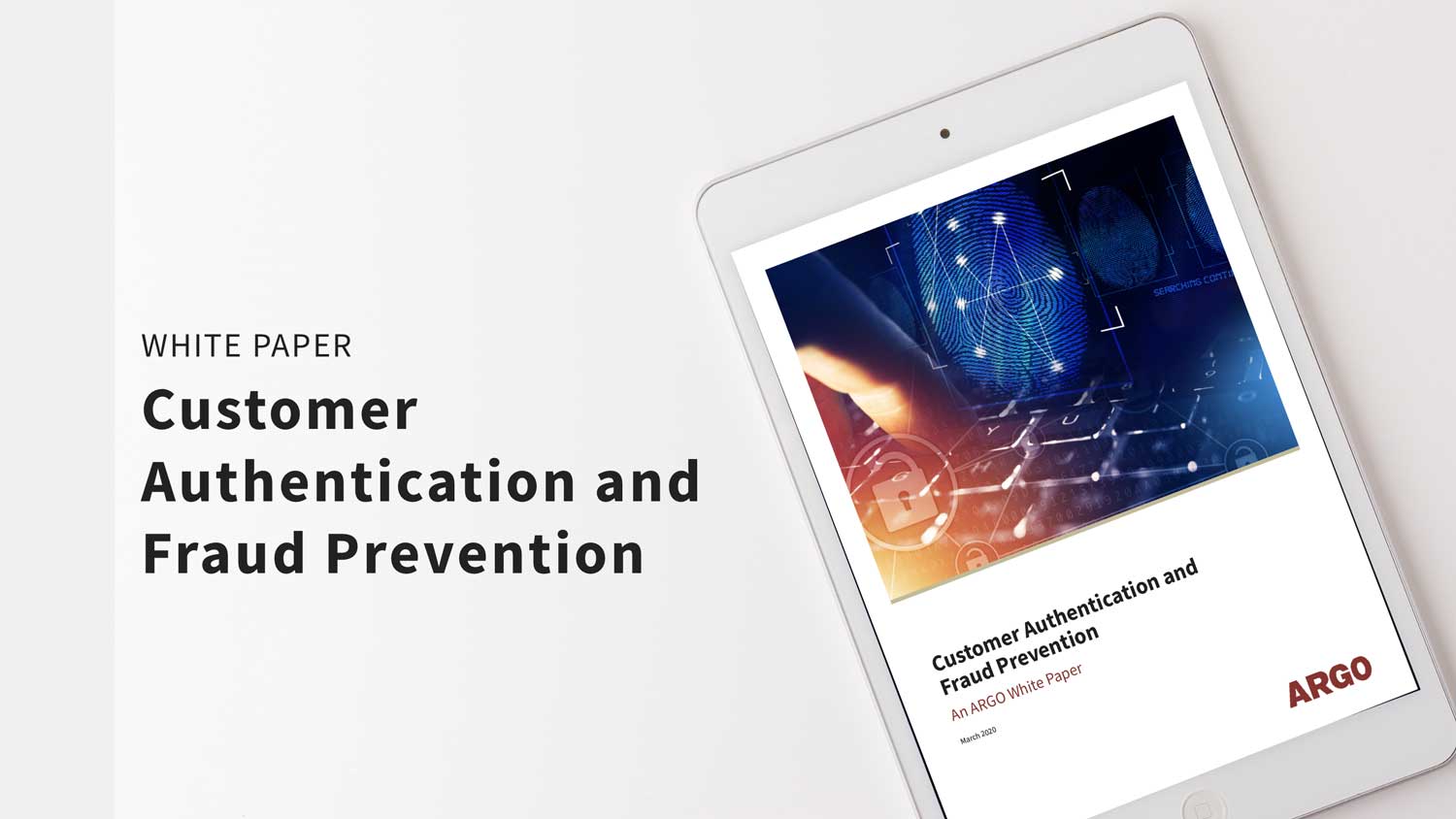
Evolving Threat of Fraud Requires Robust Authentication
Identity theft is becoming one of the fastest growing crimes in the U.S., as numerous data breaches and sophisticated fraud schemes make it easy for criminals to obtain consumer data for fraudulent purposes. While digital technology, combined with self-service, gives consumers the three things they highly value – choice, convenience, and empowerment, it exacerbates issues with customer identification and verification, and increases fraud risk when transacting business.
This white paper discusses the six elements essential to a comprehensive customer authentication and fraud prevention strategy:
- Identity Authentication methods use software and hardware capabilities to ensure a customer’s identity before giving access to sensitive data or allowing transactions or services to occur.
- Fraud verification validates that an applicant’s identity actually exists, and the person is who they say they are using automated processes performed at the time of customer onboarding, registration, insurance validation, application for a product or service, or a new account opening.
- Compliance ensures that institutions’ processes are aligned to enforce legal requirements, industry regulations, and best practices, and provide proof of process.
- Data quality is a measure of data’s ability to be used for its given purpose.
- Risk assessment uses predictive analytics to quantify and provide a risk score for the customer over time.
- Customer knowledge is the ongoing, combined customer experience, value, and insight data that is created and used to drive actionable decisions during customer interactions with an institution.
This downloadable white paper outlines the requirements for building a customer authentication and fraud prevention strategy and solution that meets all of the above expectations and aligns with your institution’s overall goals.
